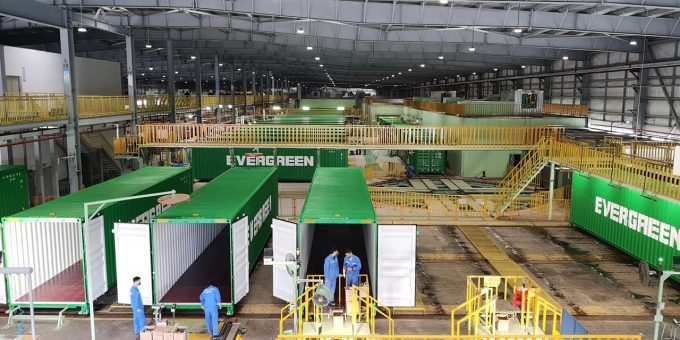
By Martina Li in Taiwan, The Loadstar, 04/11/2024
China International Marine Containers (CIMC), the world’s largest container manufacturer, said its output in the first nine months of the year rose five-fold after the Red Sea crisis sparked resurgent demand.
From output of 2,490,000 boxes, (including 93,400 reefers, up 17%) revenue rose 36% year on year, to CNY128.97bn ($18.37bn), while net profit nearly doubled, to CNY2.73bn ($388.35m).
CIMC said: “In the first three quarters, global container trade demand rebounded. Clarksons recently forecast that global container trade will increase significantly, from 0.7% in 2023 to 5.2% in 2024, and it is expected that such trade will continue grow, by 2.8%, in 2025.
“To manage the risk of container shortages caused by the prolonged Red Sea crisis, port strikes and other uncertain events, customers are more willing to order new containers.
“Although there are still risks and challenges, the trend of continued growth in trade volume is expected to remain unchanged. At the same time, international inflation has cooled down, and the US Federal Reserve’s interest rate cut has led many central banks worldwide to follow suit, stimulating a recovery in consumer spending.”
Drewry expects 2024 to be the second-highest year on record for dry freight container manufacturing, driven by record production in Q2 24, while in July alone, more than 850,000 teu was delivered from Chinese manufacturers, which have reported being busy until this month.
The provision for getting containers in numbers at locations where they are required has become a challenge, because of the strong exports from Asia, congestion at transhipment ports and declining container turnover, due to the extended sailing times caused by the Red Sea crisis that has seen ships detour round the Cape of Good Hope.
In particular, the availability of 40ft containers, the workhorses of the industry, has become increasingly tight, with more needed to move the same volume of cargo. In the first seven months of the year, 1.4m were delivered, compared with just 125,000 in the same period of 2023, indicating a tenfold surge.
